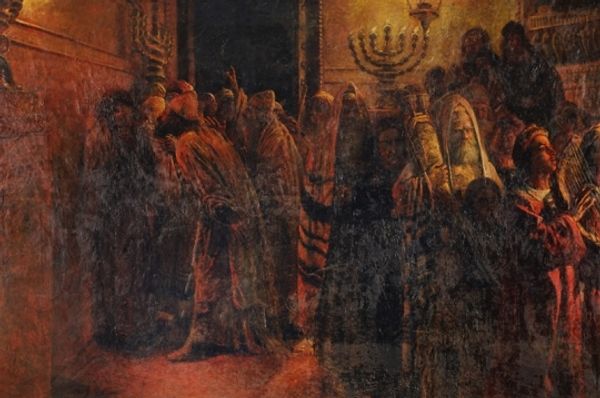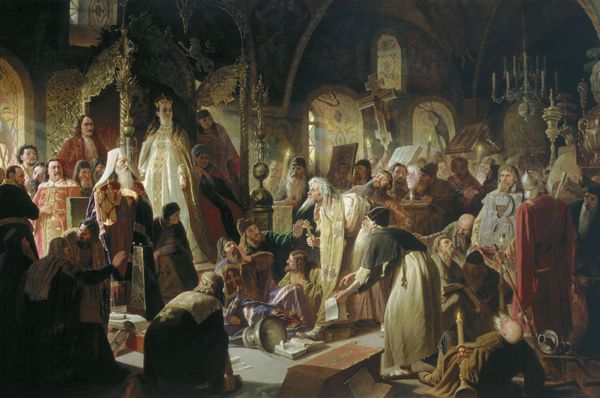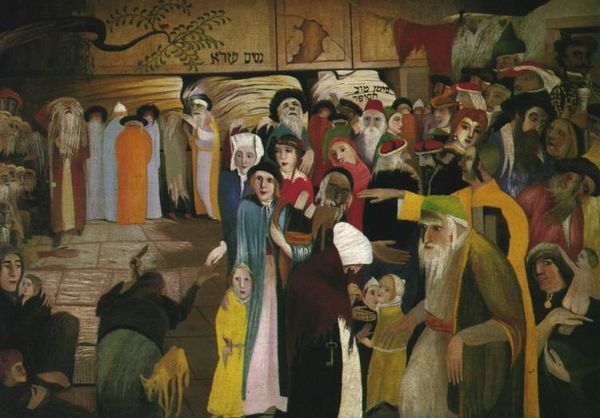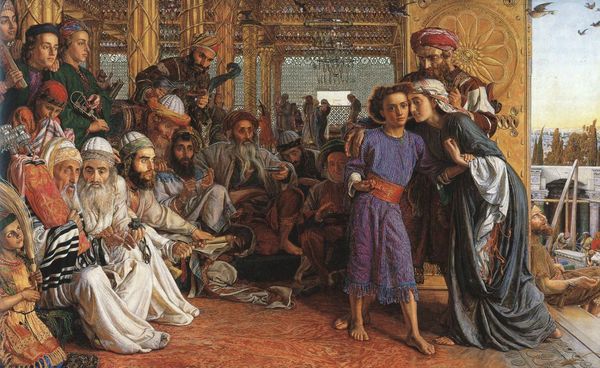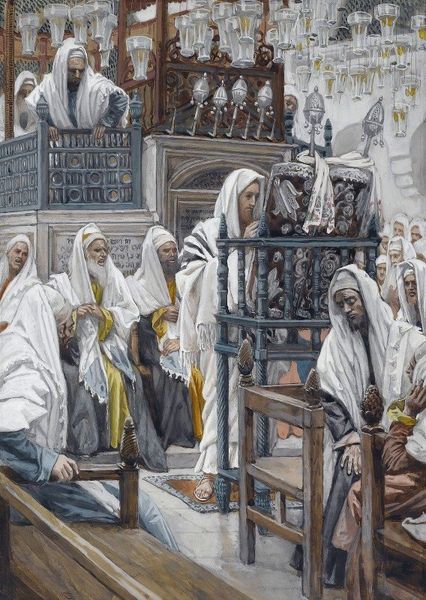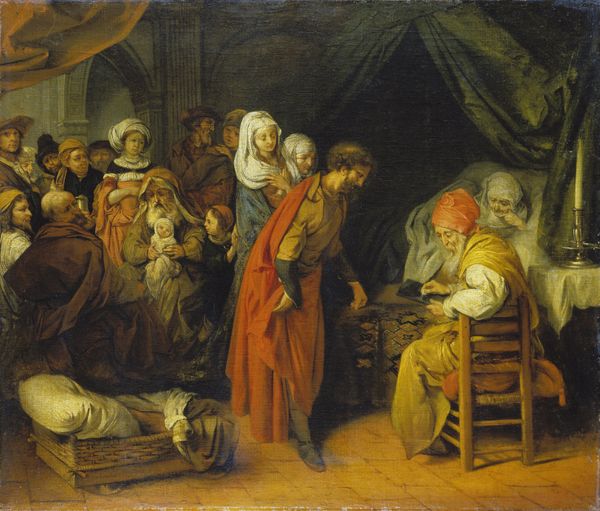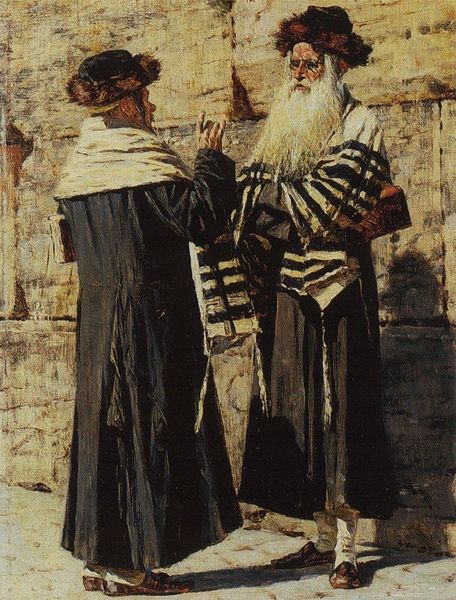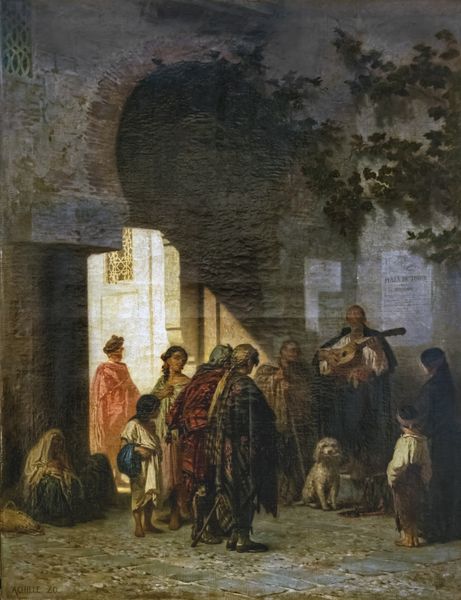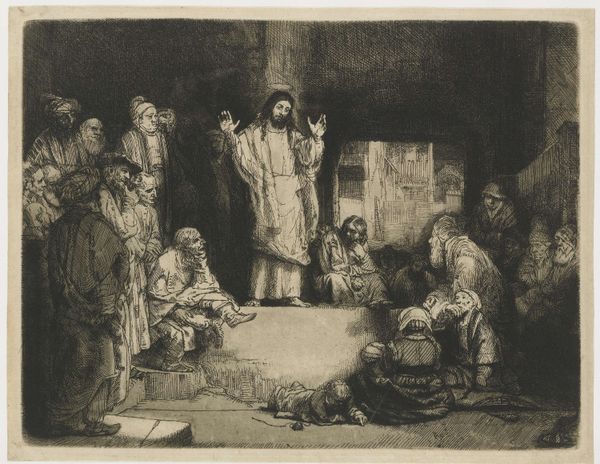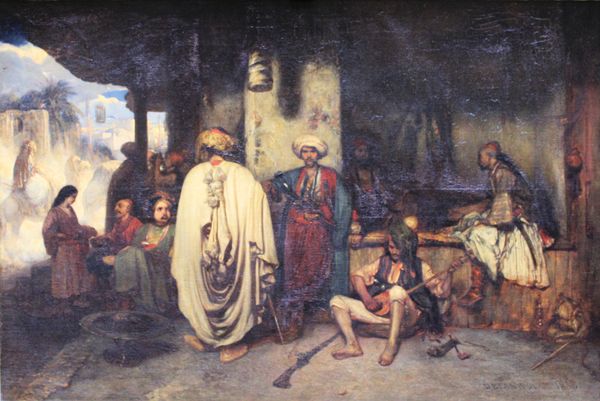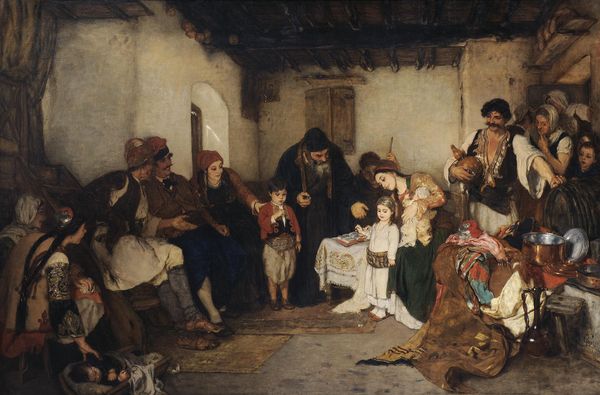
Copyright: Public domain
Curator: Upon first viewing, what strikes me most is the solemn stillness juxtaposed with the bustling arrangement of figures; their faces carry such varied emotional registers. Editor: That's astute. Well, what you're observing is Maurycy Gottlieb's “Jews Praying in the Synagogue on Yom Kippur," created in 1878. We see represented here a critical moment in Jewish religious life in oil paint, held in the Tel Aviv Museum of Art. The work embodies a historical genre piece combined with formal academic techniques. Curator: I note the artist’s application of paint; observe how the light delicately glimmers across the fabric of the prayer shawls and the subtle tonal gradations rendering depth in the faces. A sense of unified, almost spiritual luminosity is created. Editor: Precisely. Gottlieb was keen on accurately reflecting the textures of Jewish life within the political climate of his time, especially amidst rising antisemitism in Europe. The composition aims at social representation and the tensions between tradition and modernity. Gottlieb did insert his own likeness into the painting as a figure who appears torn by conflicting beliefs. Curator: It's evident in the subject’s gaze, this inner conflict you mentioned. Semiotically speaking, it's almost a mirror reflecting the tensions between individual doubt and communal faith—a beautiful study in representational art! Note his decision to illuminate the scroll. Editor: Yes, I believe he captures a broader tension between personal identity, the social pressures to assimilate, and traditional commitments. This resonates powerfully considering his biography; he grappled with cultural assimilation pressures and later rejected those modernizations that stripped religious life of its meaning and vitality. Curator: It’s as if we see two planes of reality interacting: the spiritual, elevated by luminosity and symbolic religious garb, and the secular, weighed down with shadows and subdued color schemes. Editor: Ultimately, Gottlieb has gifted us more than merely a scene. We witness history reflected and also a dialogue—often an agonizing dialogue, given its history, regarding the navigation between heritage and an evolving world. Curator: Indeed, Gottlieb demonstrates that masterful artwork provides both structure and profound dialogue within each application of color to the surface! Editor: Thank you. This visit provided food for thought indeed, I hope the visitors feel the same way!
Comments
No comments
Be the first to comment and join the conversation on the ultimate creative platform.
